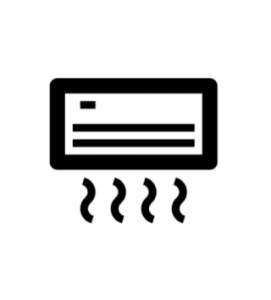Choosing a Commercial Furnace Filter
Your furnace filter might look insignificant, but this little component does the double duty of protecting your HVAC system from damage and maintaining good indoor air quality in your building. Because a commercial setting brings so many people together in relatively close quarters, the quality of the HVAC air filter used is just as important as in a residential setting.
You’ll need to choose both the type of furnace filter you want and the efficiency. An HVAC air filter’s efficiency at trapping contaminant particles is indicated by its MERV, or minimum efficiency reporting value. A higher MERV indicates a more efficient filter. The filter’s design influences its efficiency.
Disposable fiberglass — These are the standard flat panel air filters. While they’re the cheapest, they’re also the least efficient with most reaching MERVs of just 1 to 4. They’re sufficient for keeping larger pieces of debris, such as hair and carpet fibers, out of your system, but they do almost nothing to improve your indoor air quality. Most last no longer than a month during the heating and cooling seasons, so you’ll need to pay attention to make sure they’re replaced on schedule.
Disposable pleated — Pleated filters are designed in an accordion-like shape that increases their particle-trapping surface so they can catch more contaminants than flat panel filters.
They may be made of fiberglass, polyester blend or another synthetic material. Models made with synthetic fibers are typically more efficient than fiberglass models.
Thanks to these improvements, pleated filters achieve MERVs of 5 to 12. This increased filtration efficiency means they can improve your indoor air quality in addition to protecting your system. They also last longer than disposable flat panel fiberglass filters. Because they don’t cost dramatically more than the standard furnace filter, they’re worth the investment for a commercial building.
Electrostatic — These filters are made with polypropylene and polyurethane materials that produce a static electric charge. Just as static electricity causes socks from the dyer to cling together, it also causes contaminant particles to cling to the filter. These filters are washable and theoretically can be used indefinitely, although in reality they’re prone to developing mold and odors. They also usually aren’t as efficient has high-efficiency pleated filters. Don’t confuse these with electronic air cleaners, which use different technology.
HEPA (high-efficiency particulate air) filters — These filters are the most efficient available and are often used in hospitals and food processing facilities where cleanliness is a top priority. A true HEPA filter has a MERV of 17 or higher and can trap 99.97 percent of dust particles 0.3 microns in diameter or larger. That means it can capture smoke particles, and certain bacteria and viruses.
Because these filters are so dense, they slow down airflow and not every furnace motor is powerful enough to handle them. If yours isn’t, a technician might be able to install a HEPA bypass system to allow for one of these filters. Note that filters labelled “HEPA-like” aren’t true HEPA filters and are therefore less efficient.
While air filters do a lot to clean up your indoor air, they can’t remove odors or vapors such as carbon monoxide, and they don’t kill biological particles such as bacteria or mold spores. If you want to remove gaseous or biological pollutants, consider installing an in-duct air cleaner such as an electronic air cleaner or a ultraviolet germicidal irradiation (UVGI) system.
Our goal is to help educate our customers about Plumbing, HVACR, Fire Protection, and Alarm Systems in Mechanical, Commercial, and Residential settings. For more information about choosing an efficient furnace filter and to view projects we’ve worked on, visit our website!








